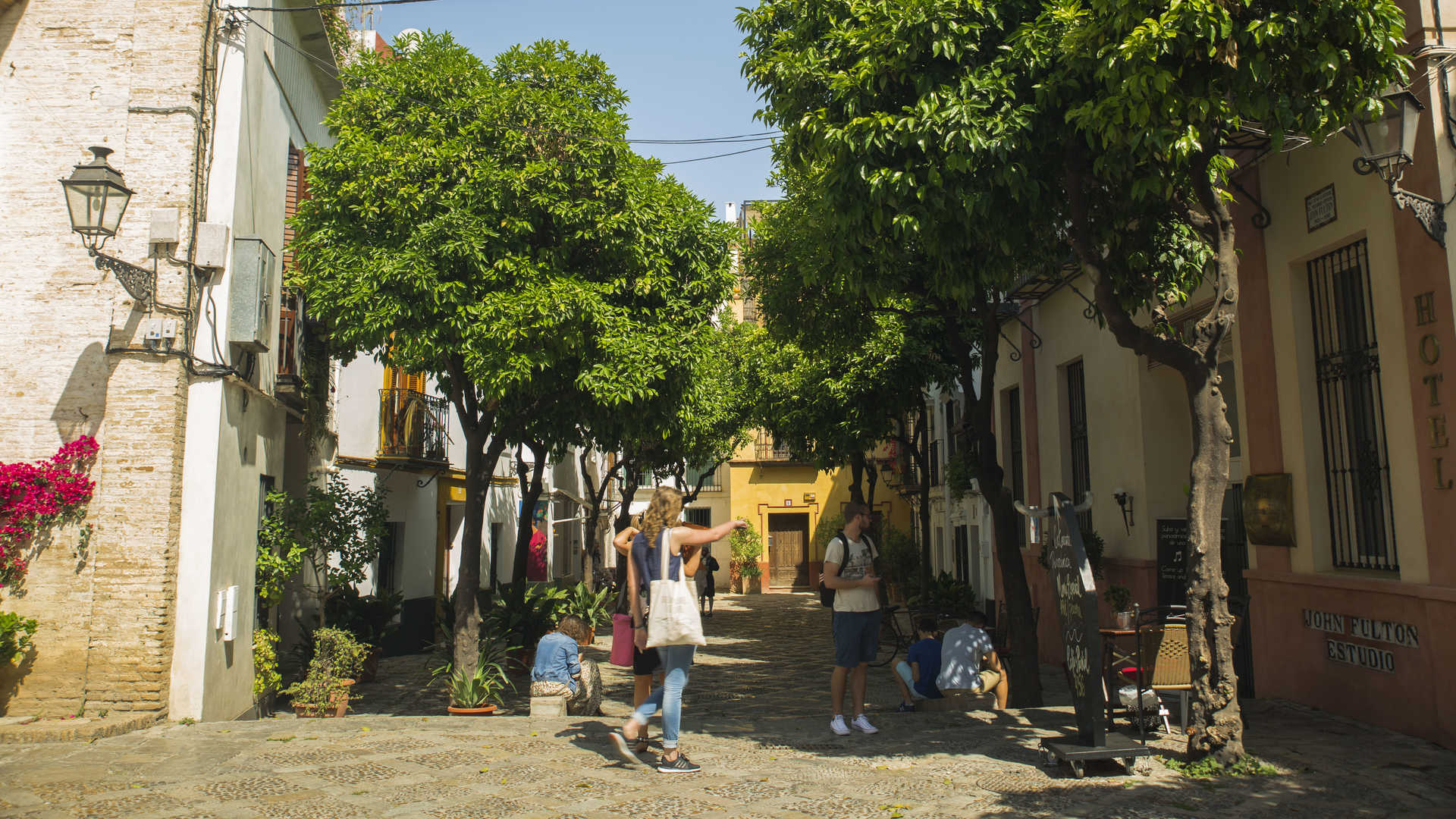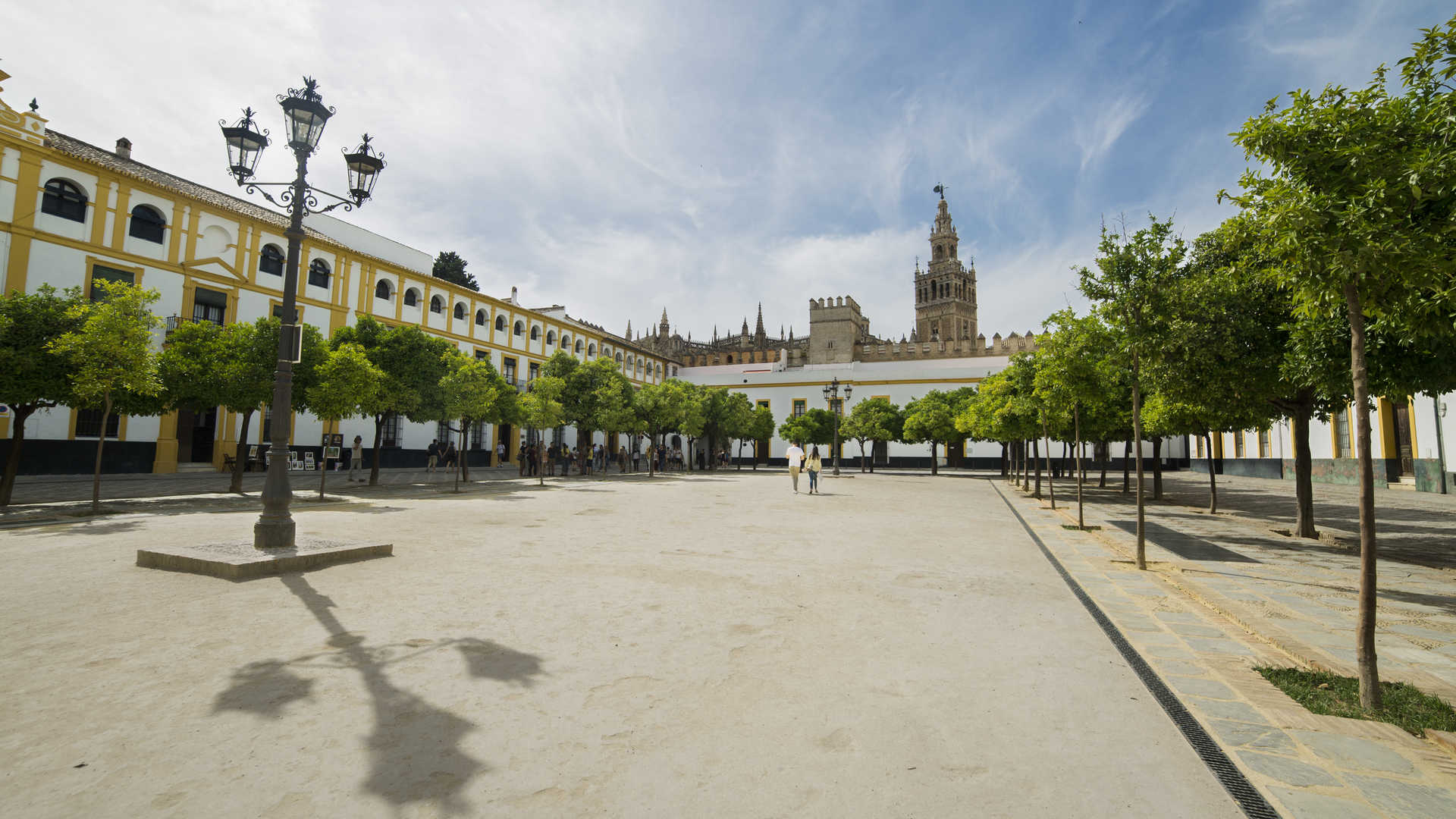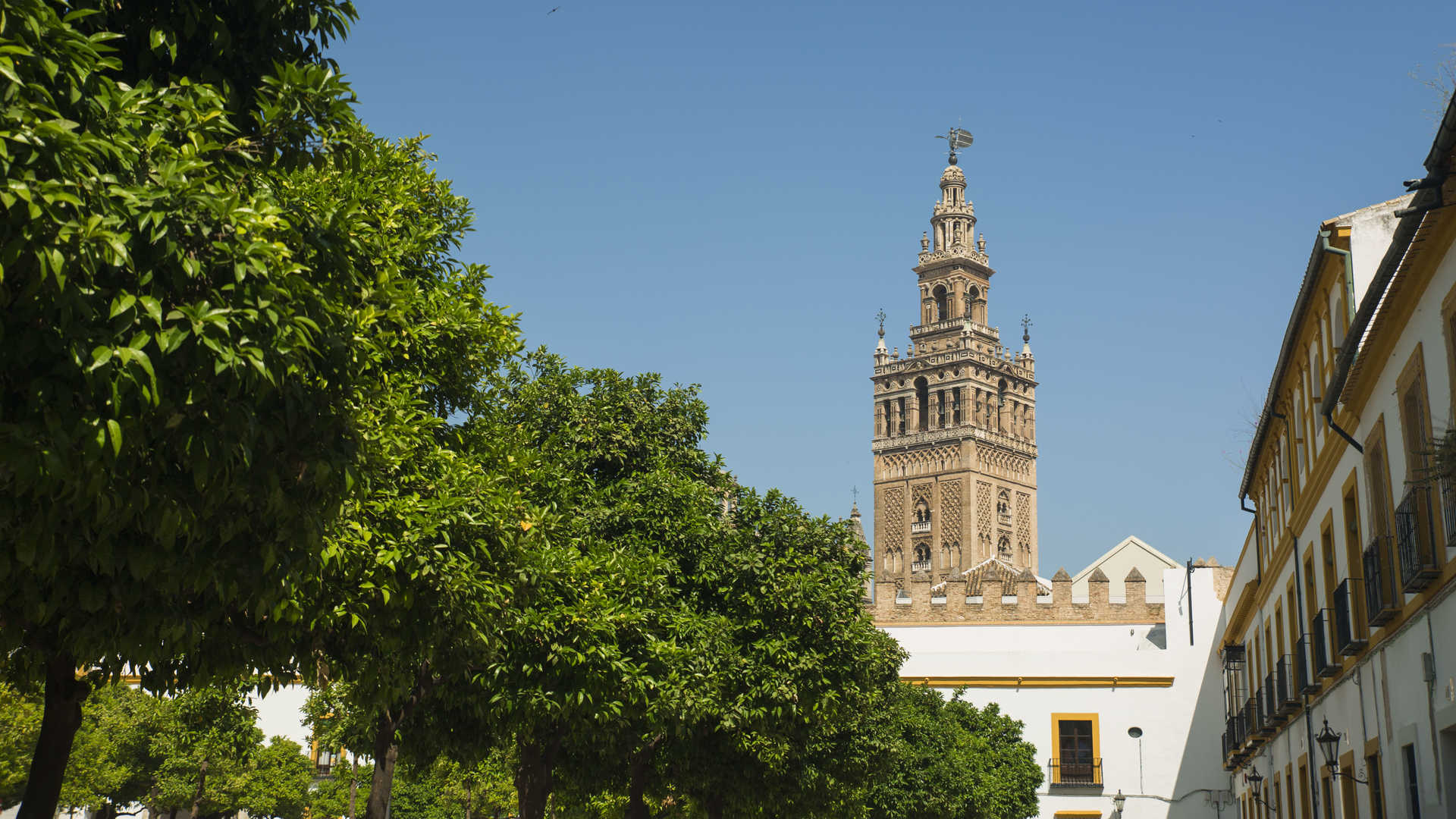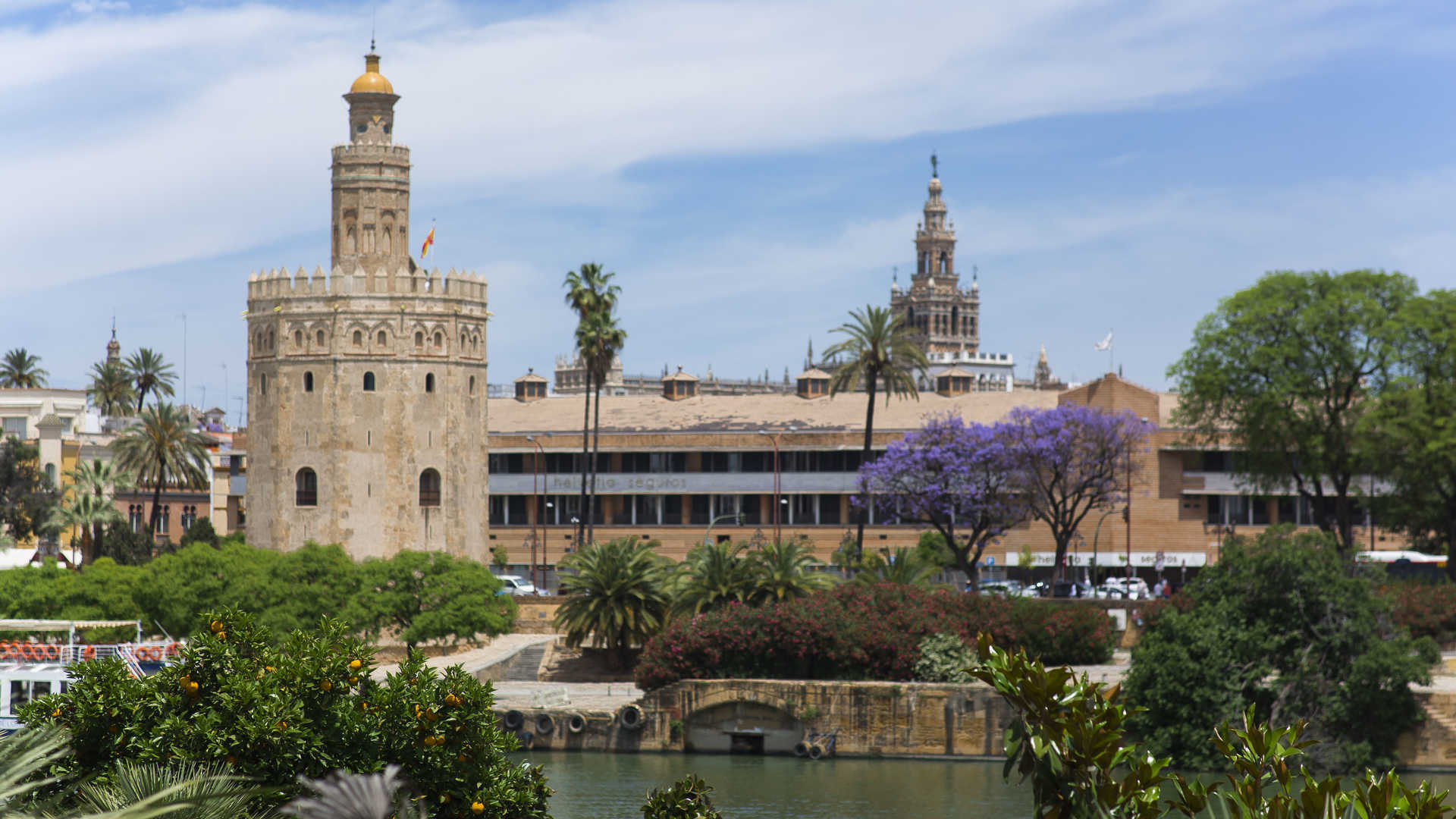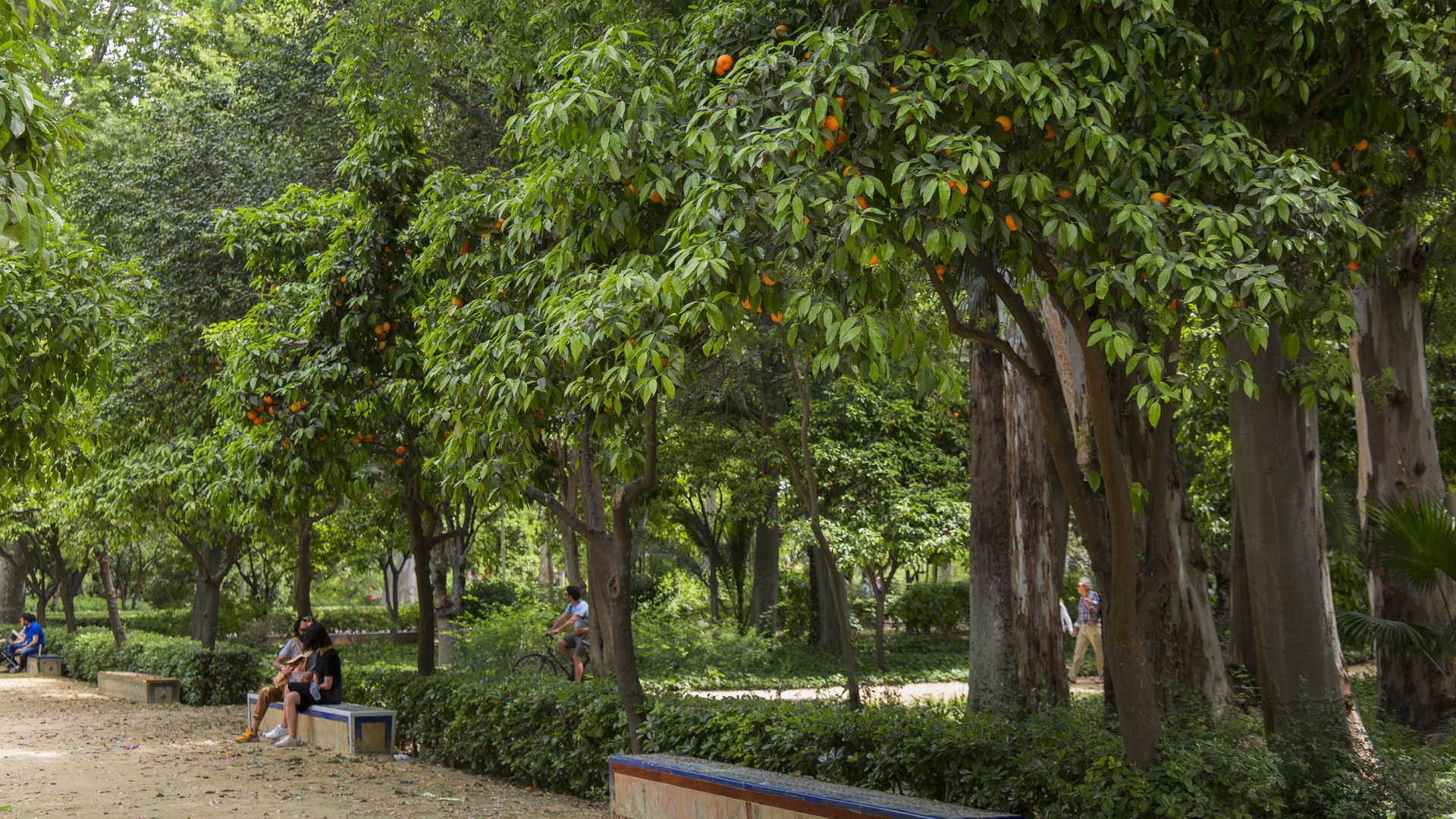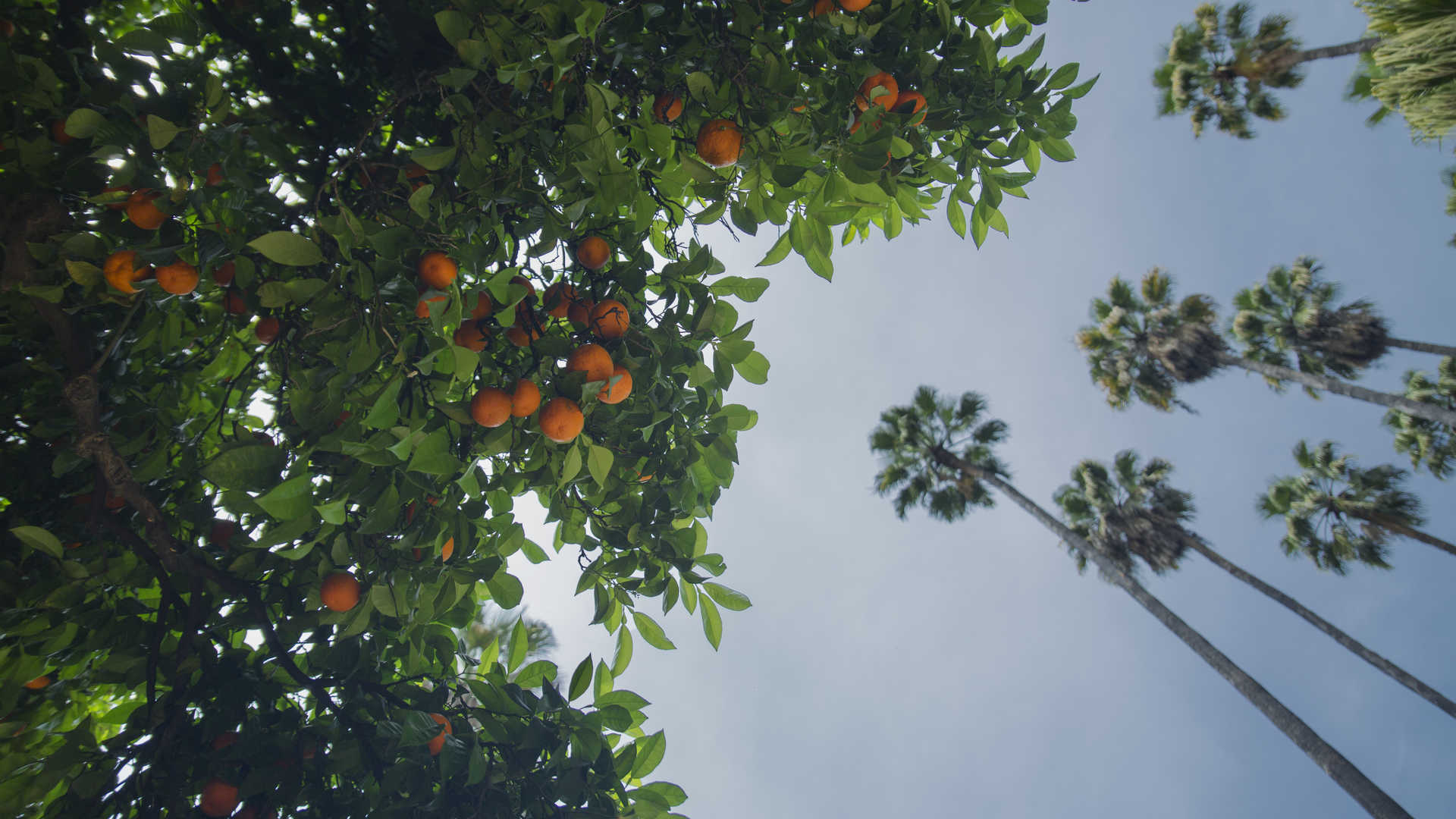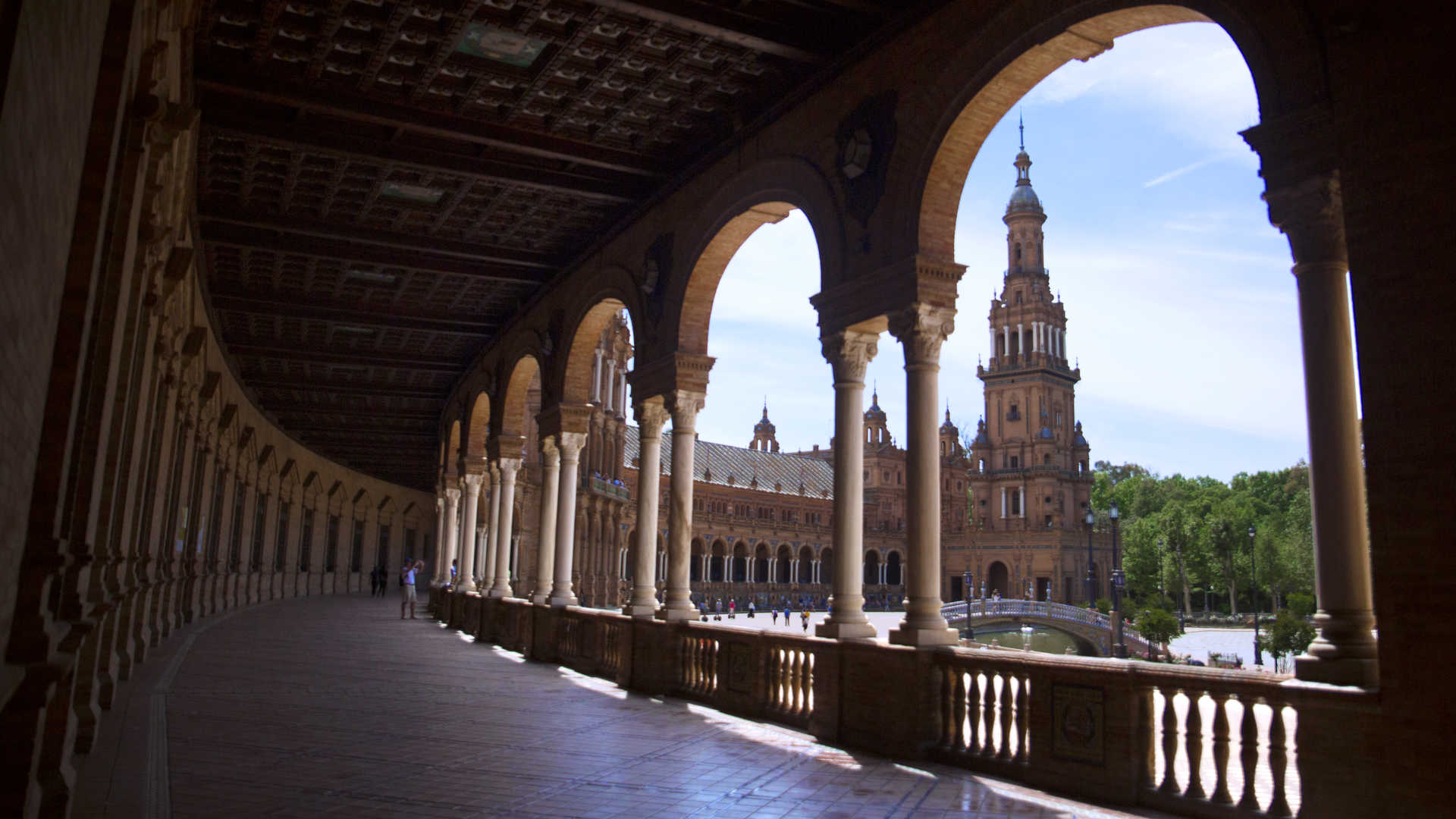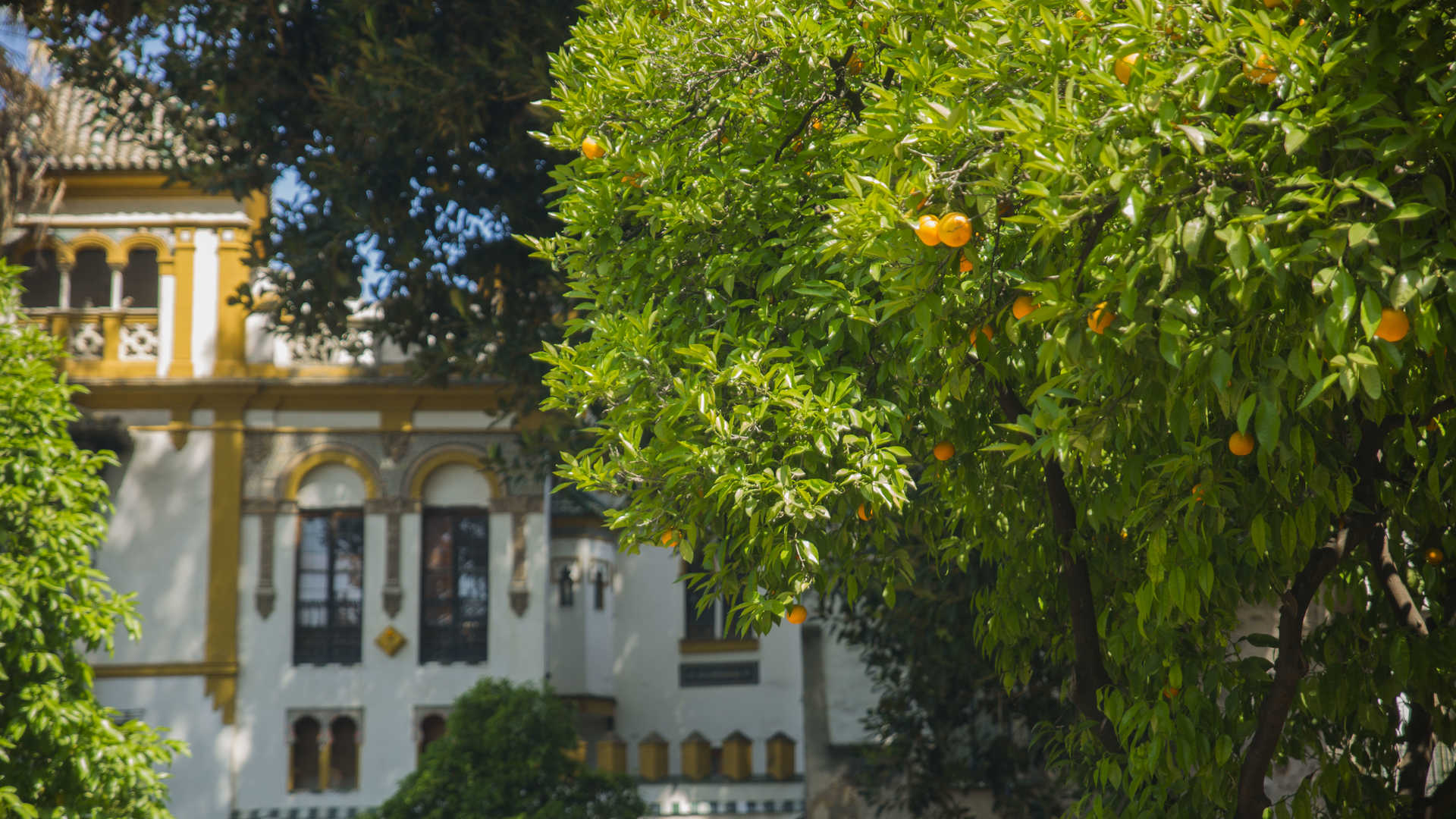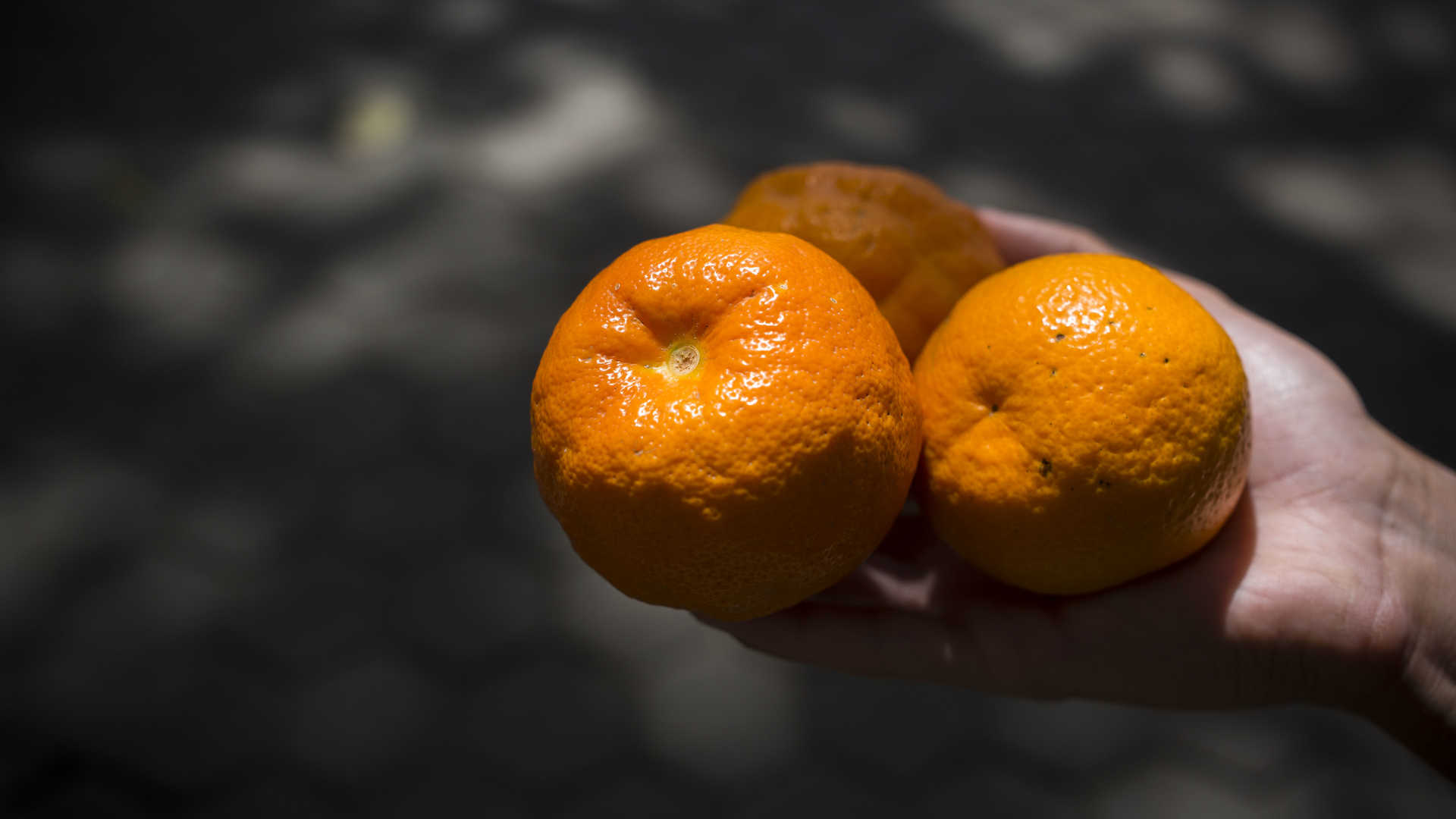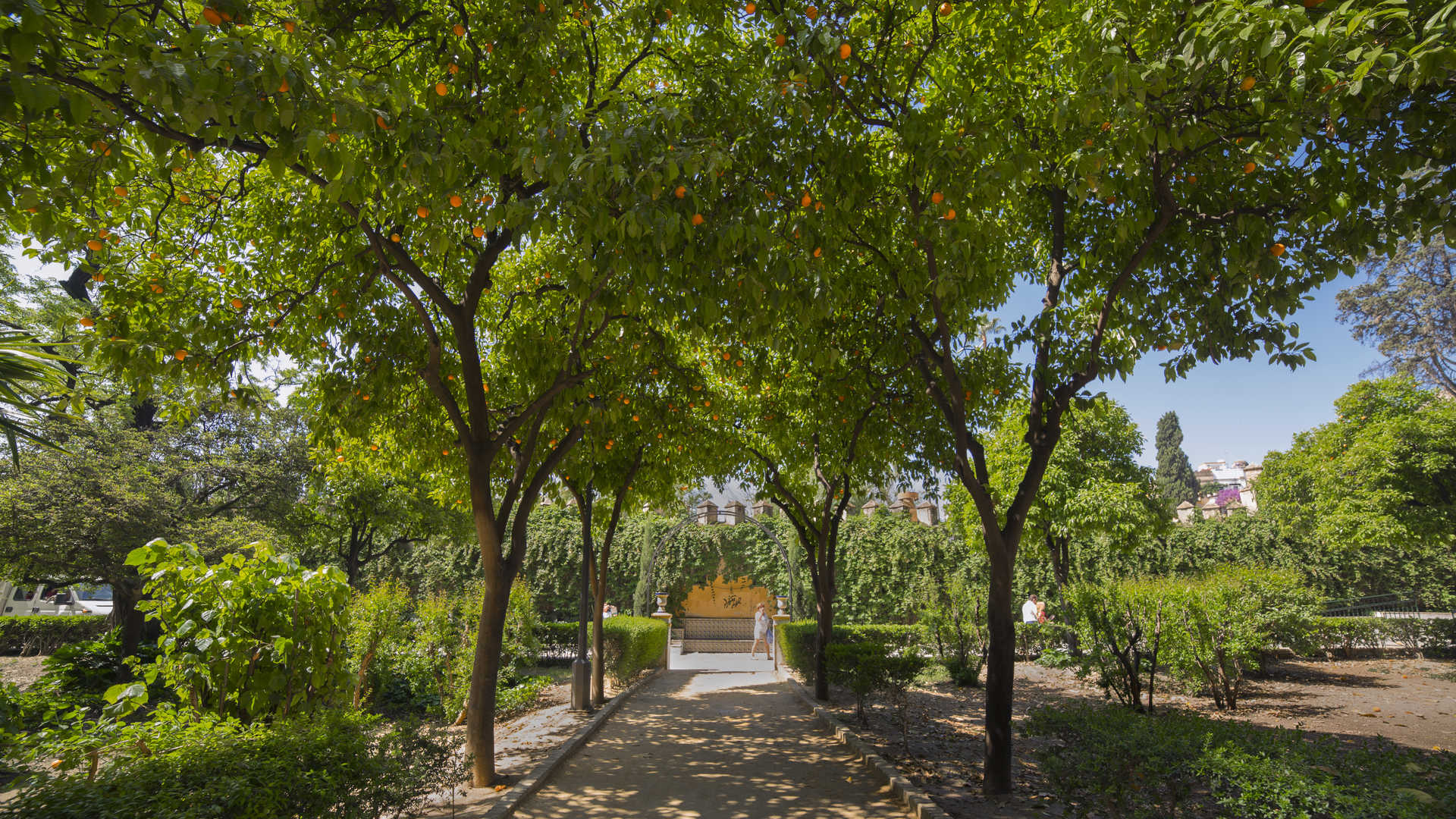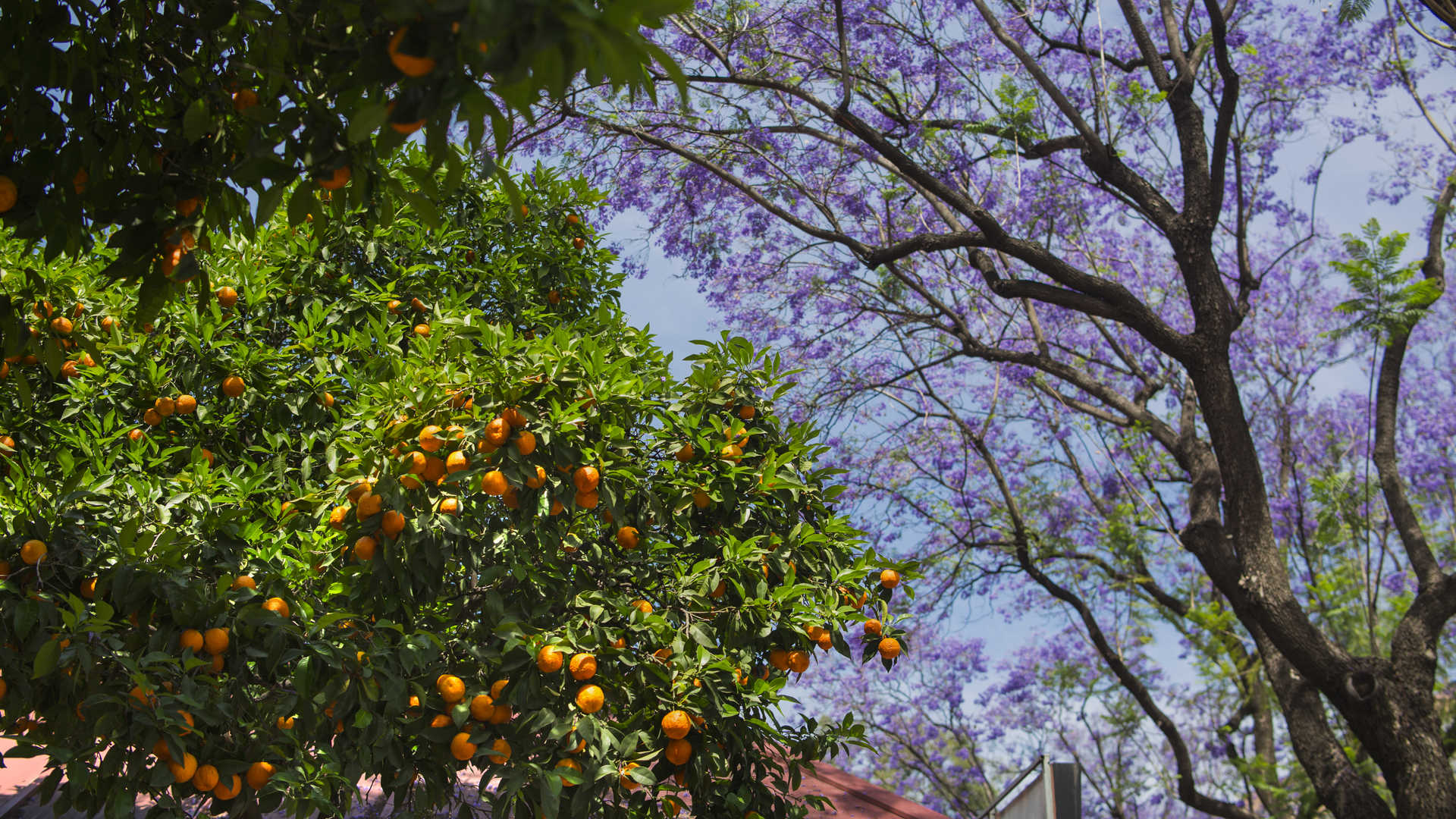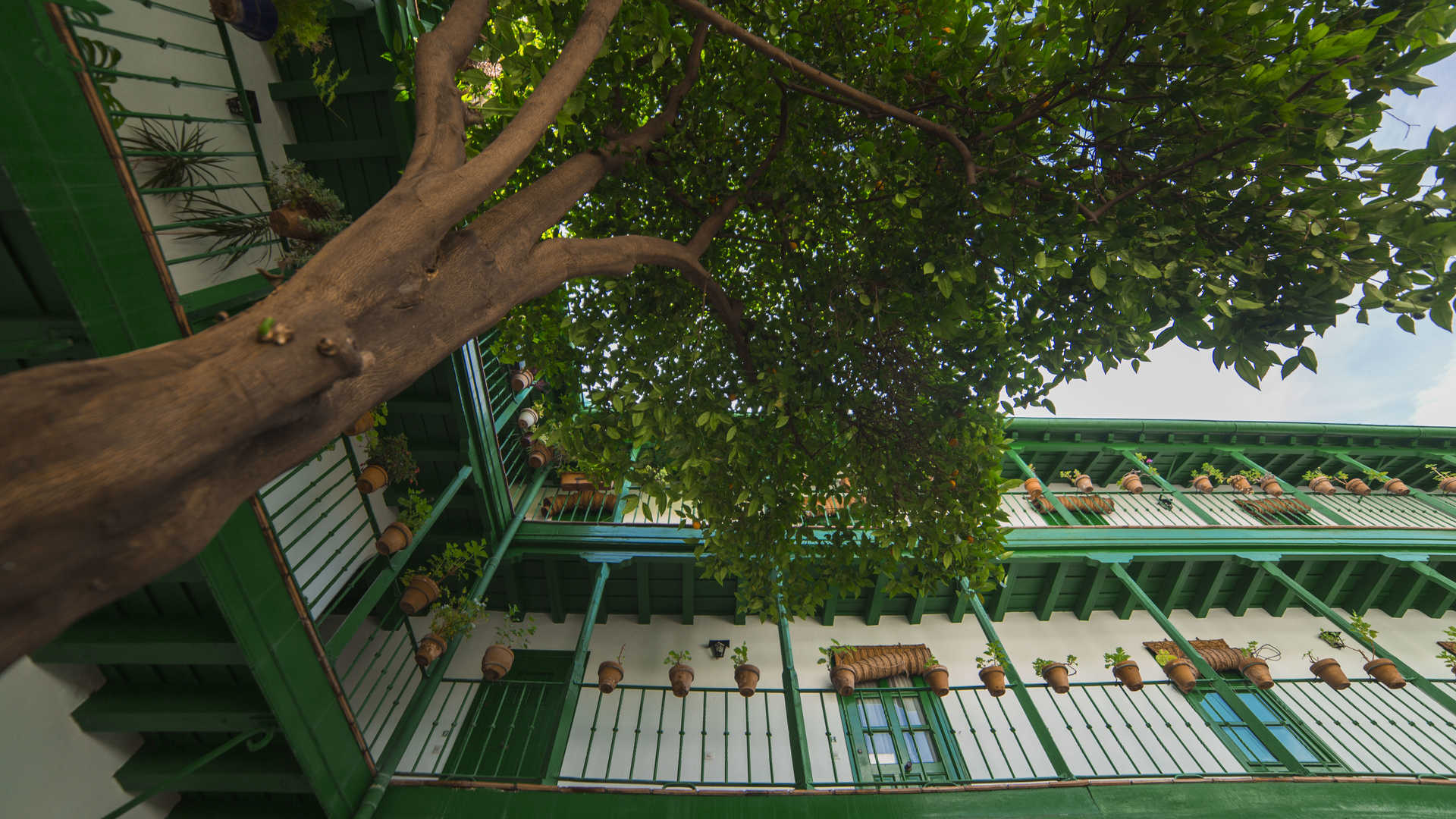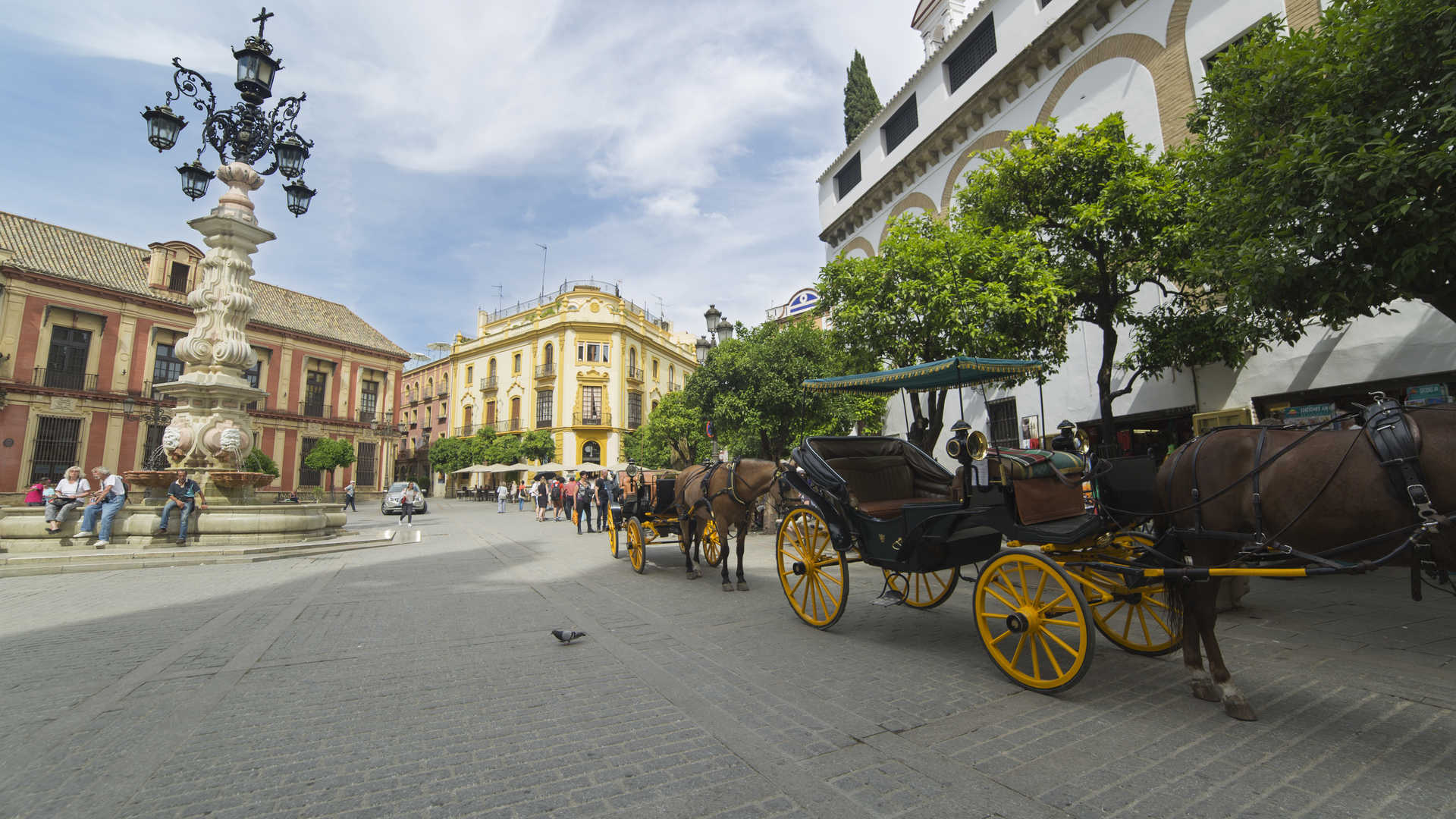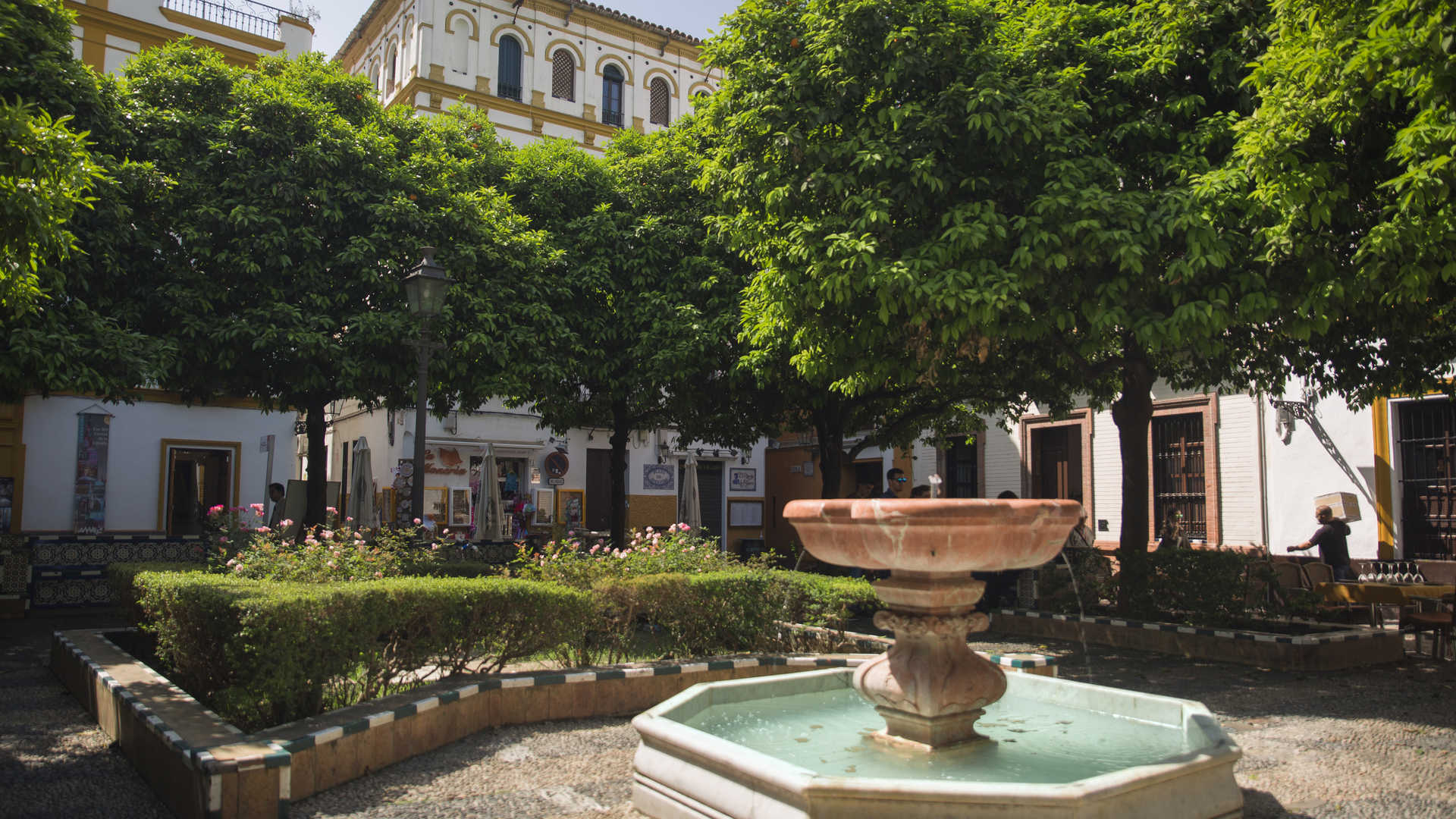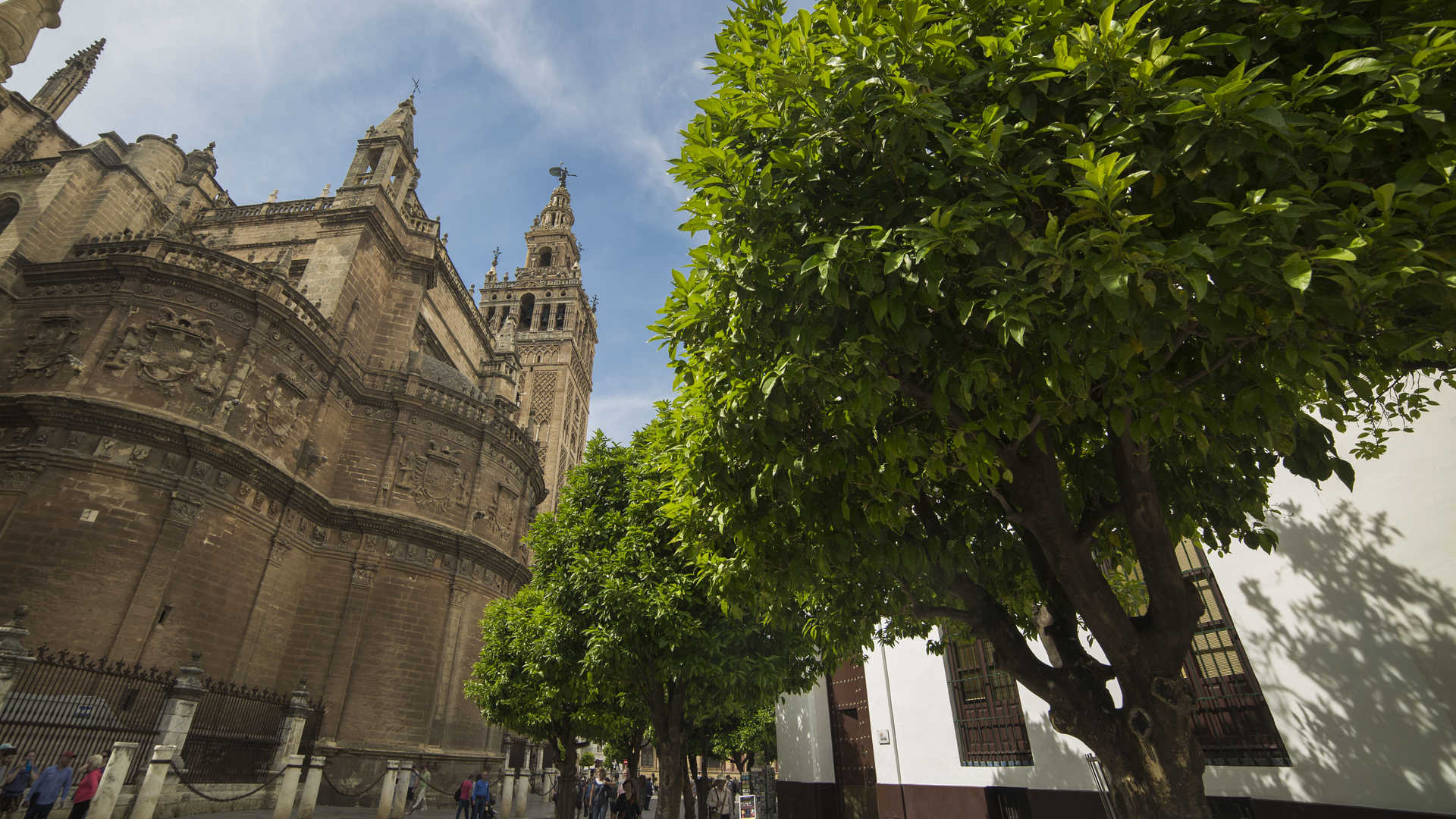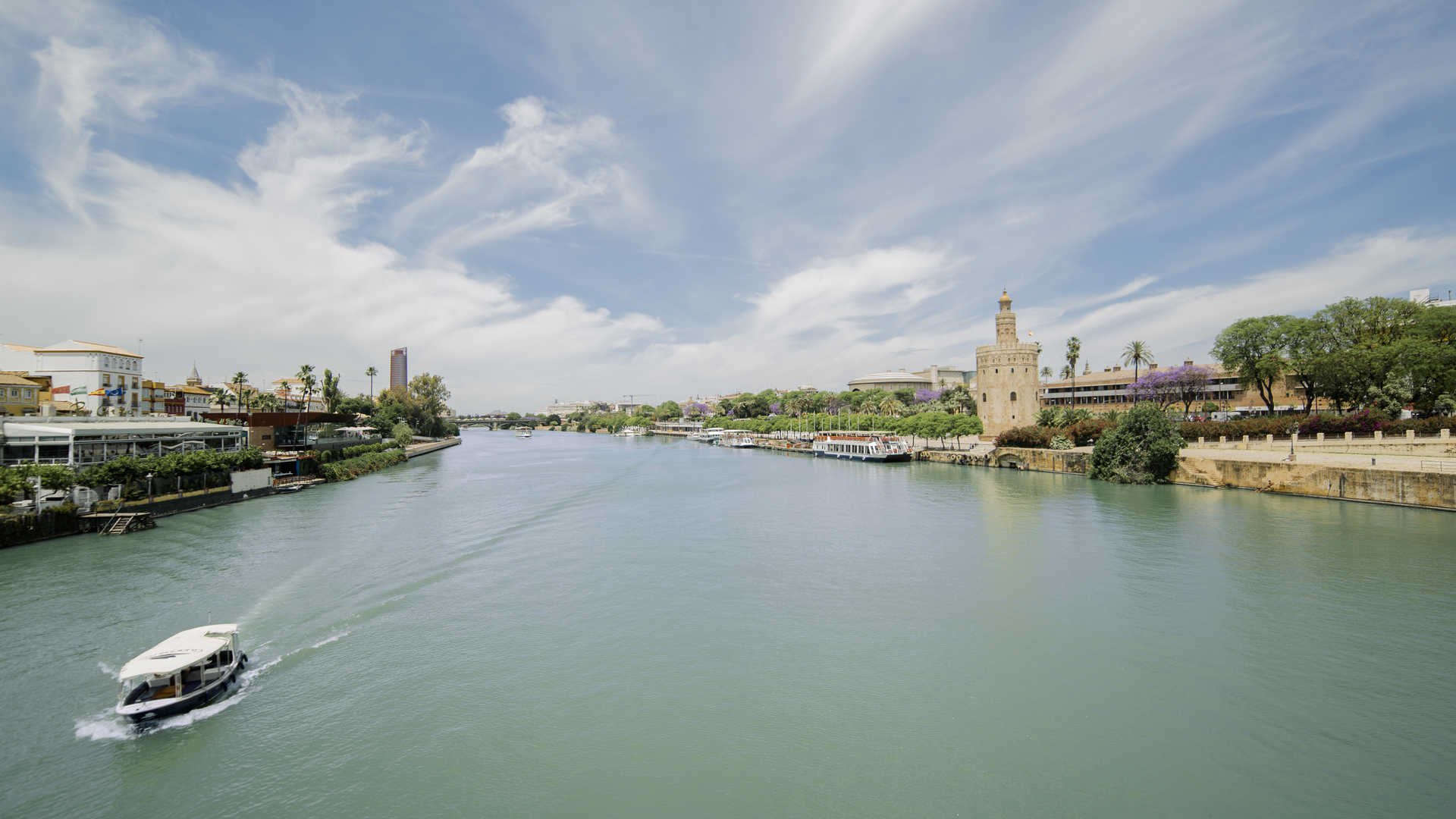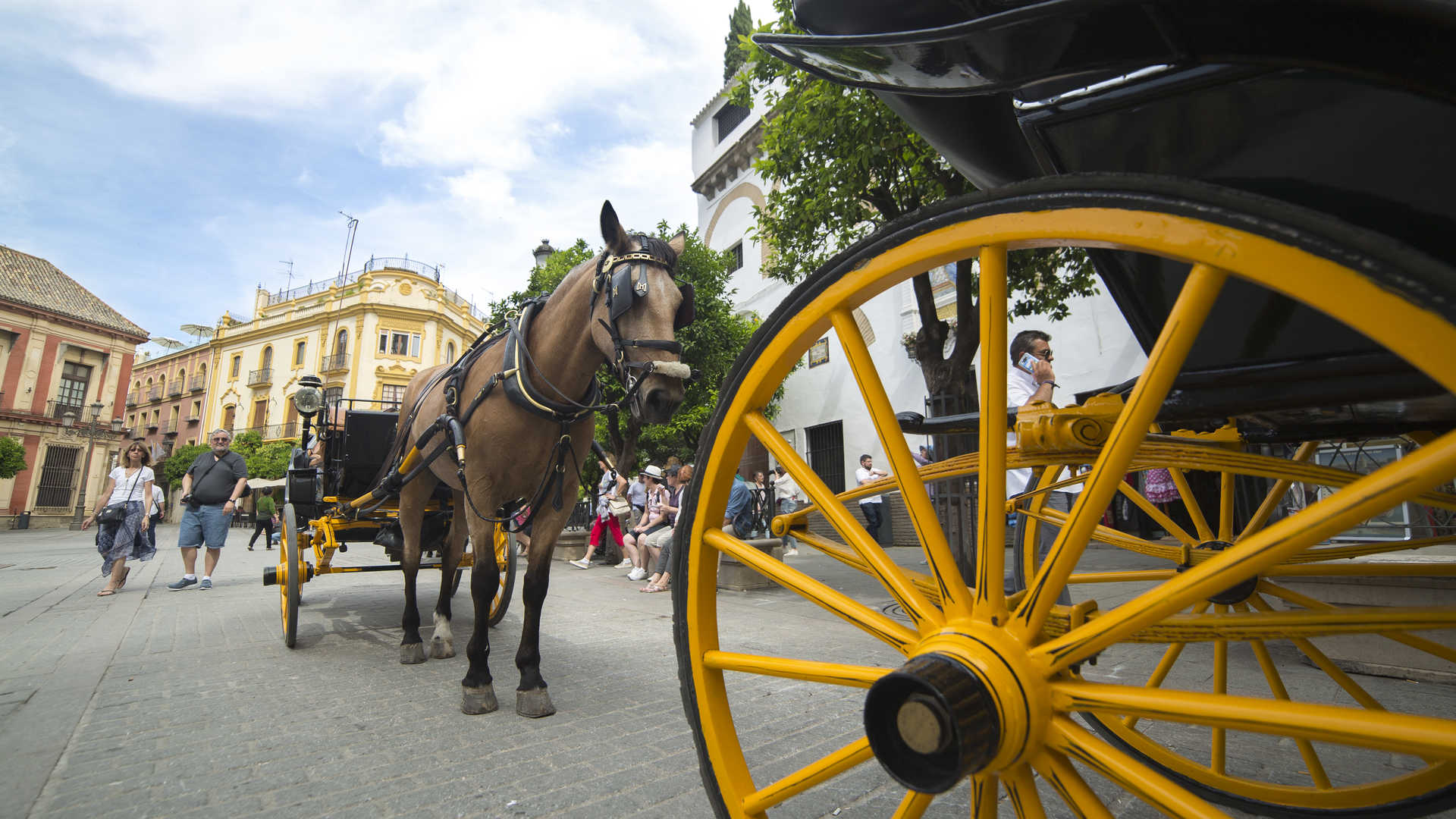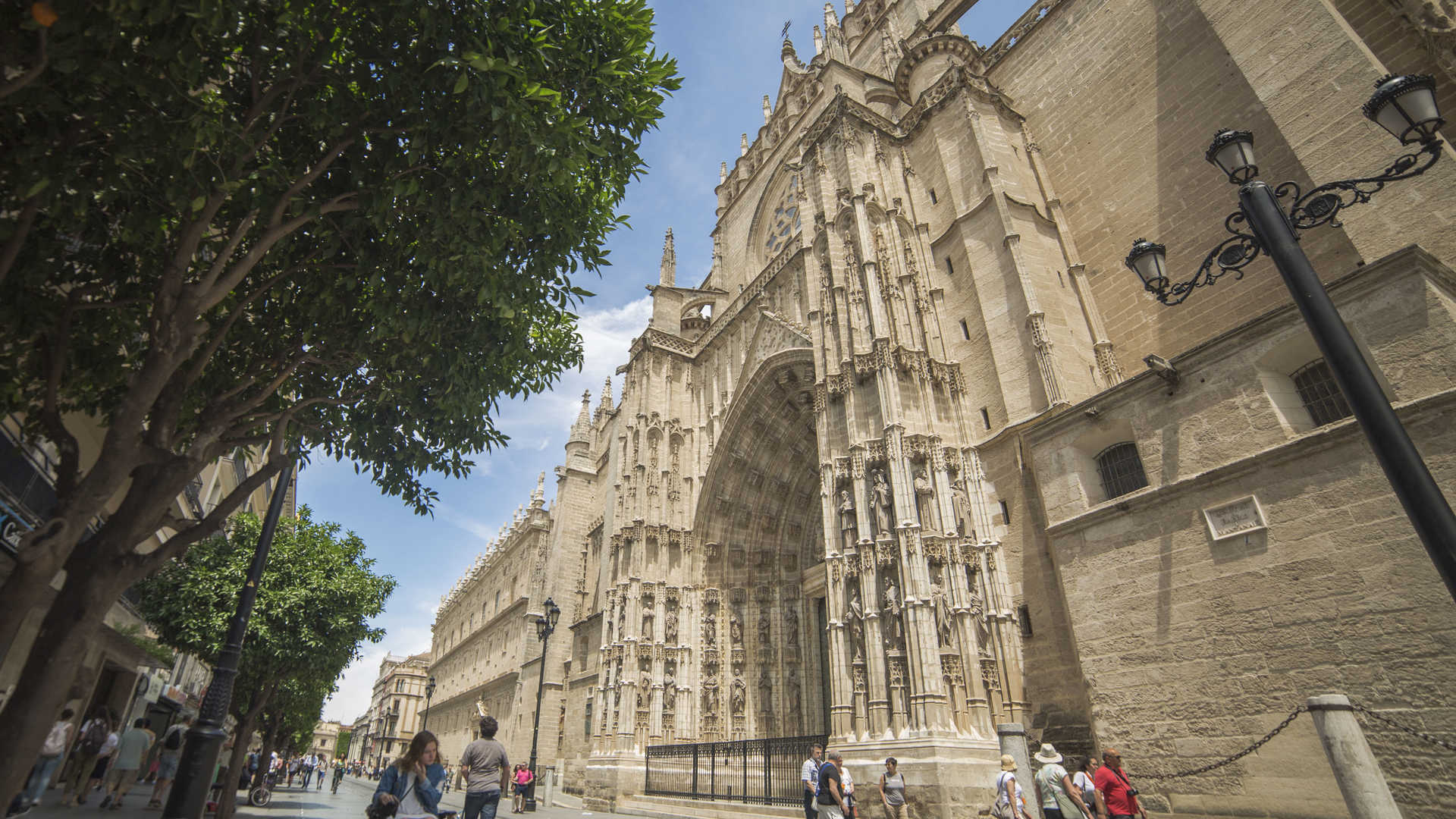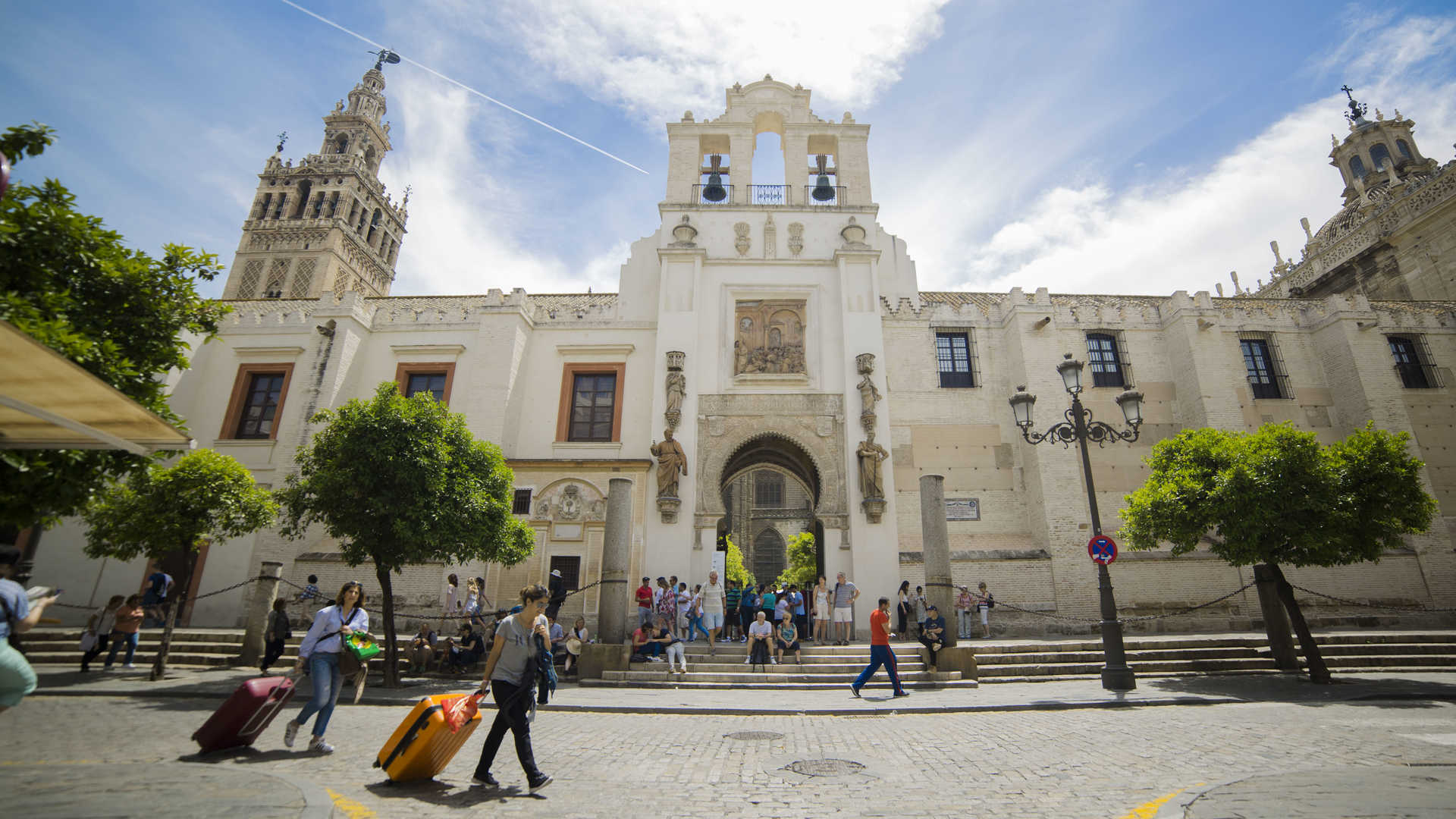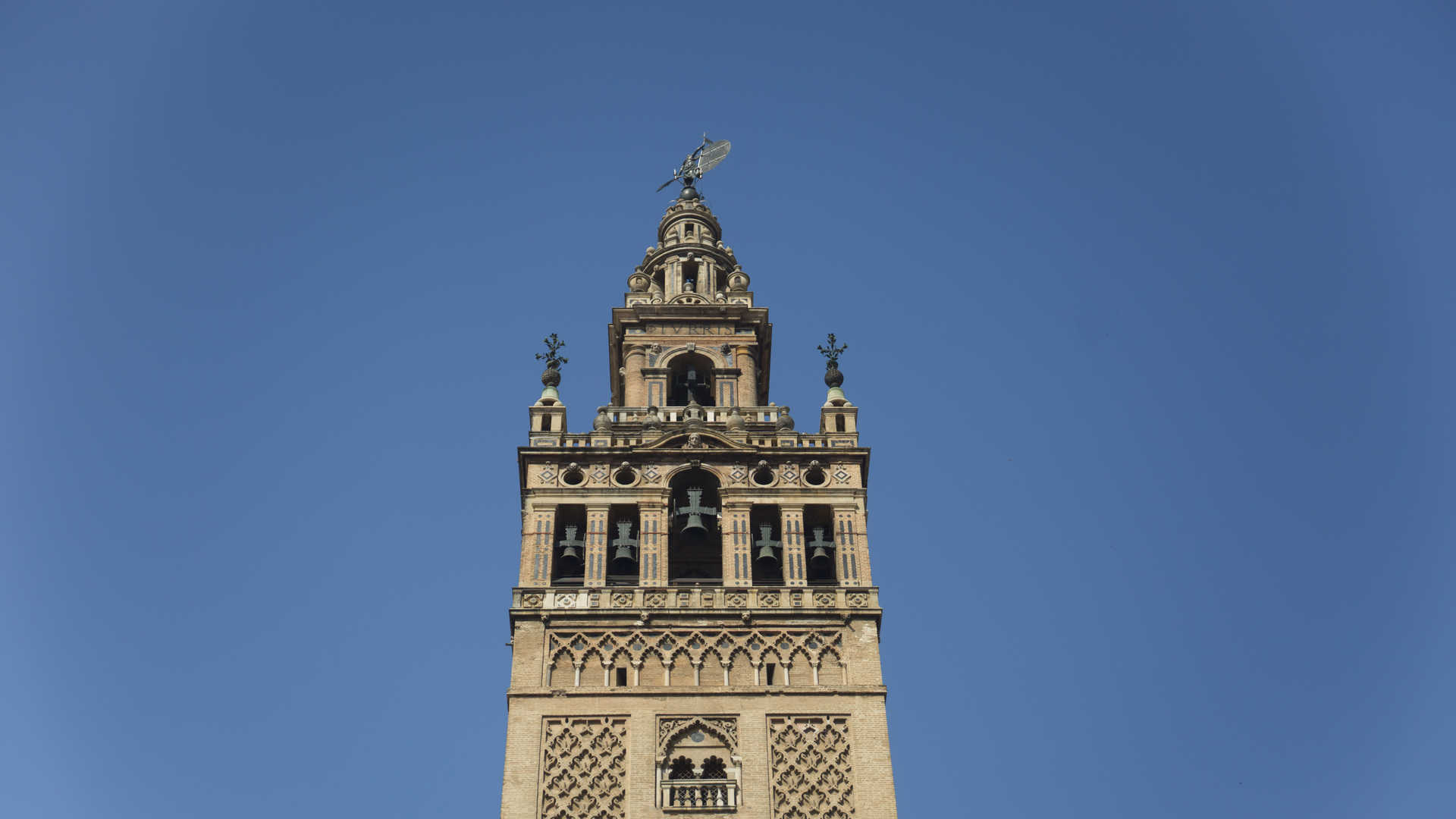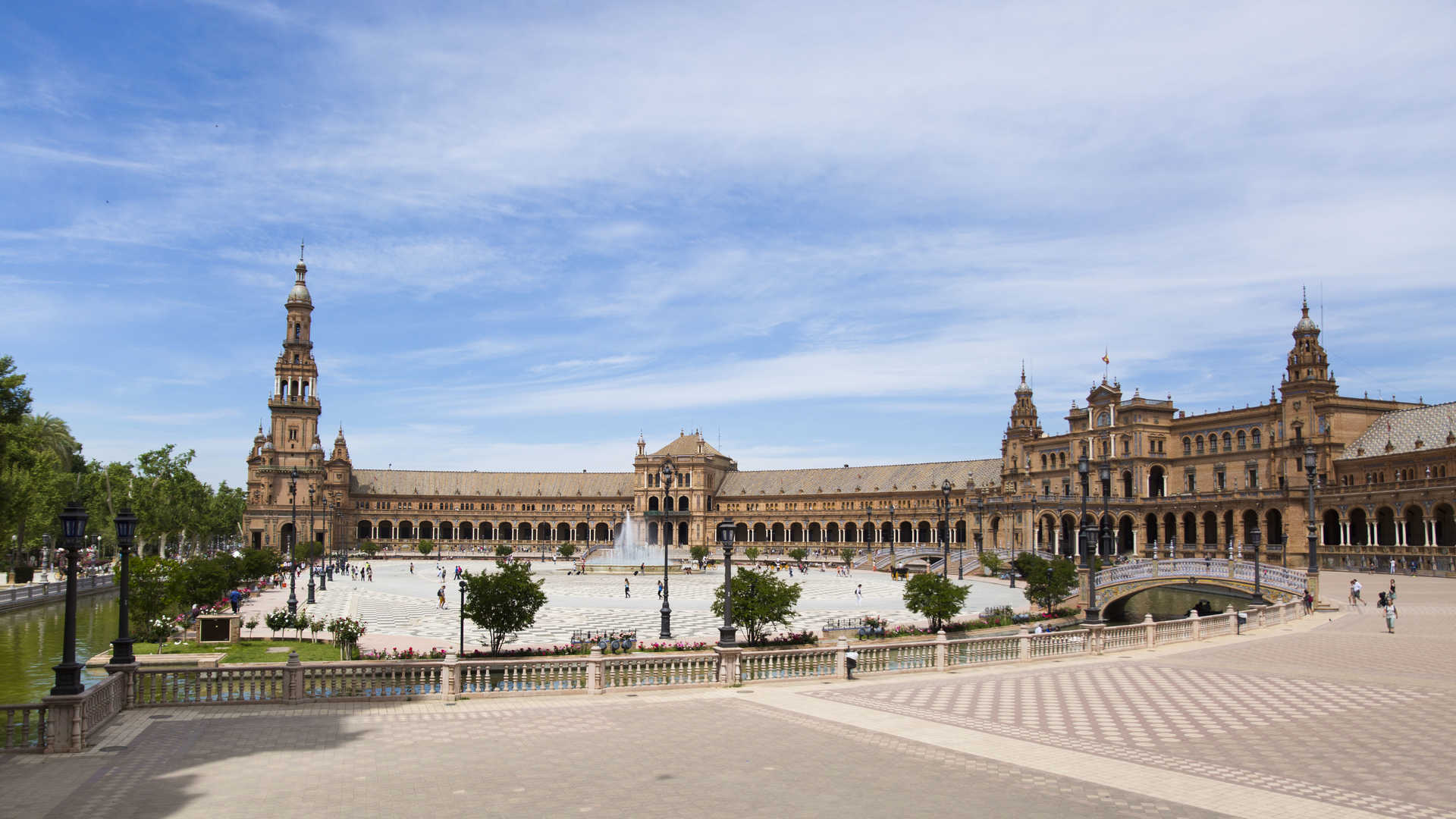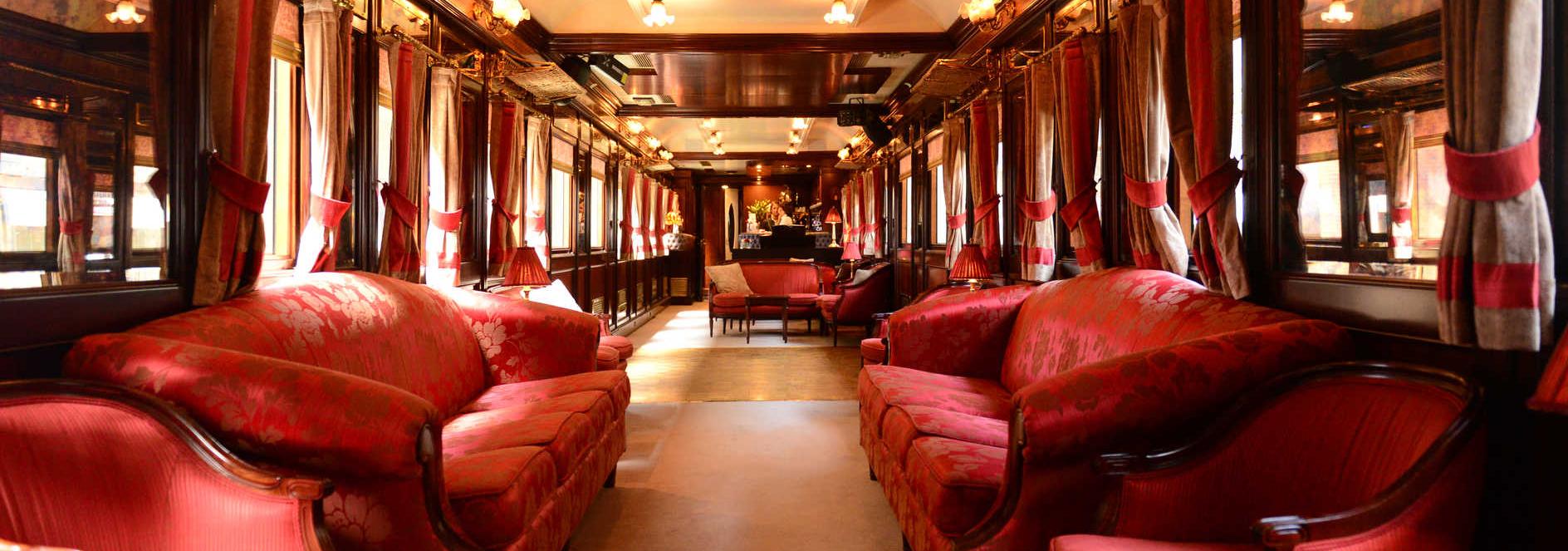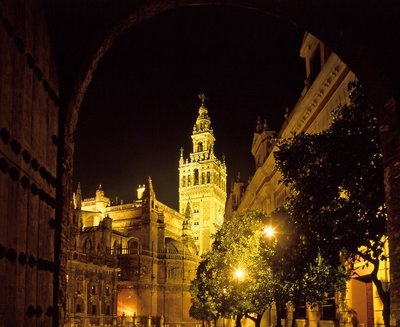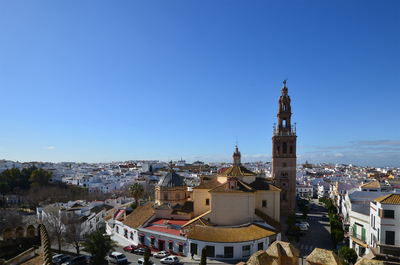The city with the most vitamin C in the world
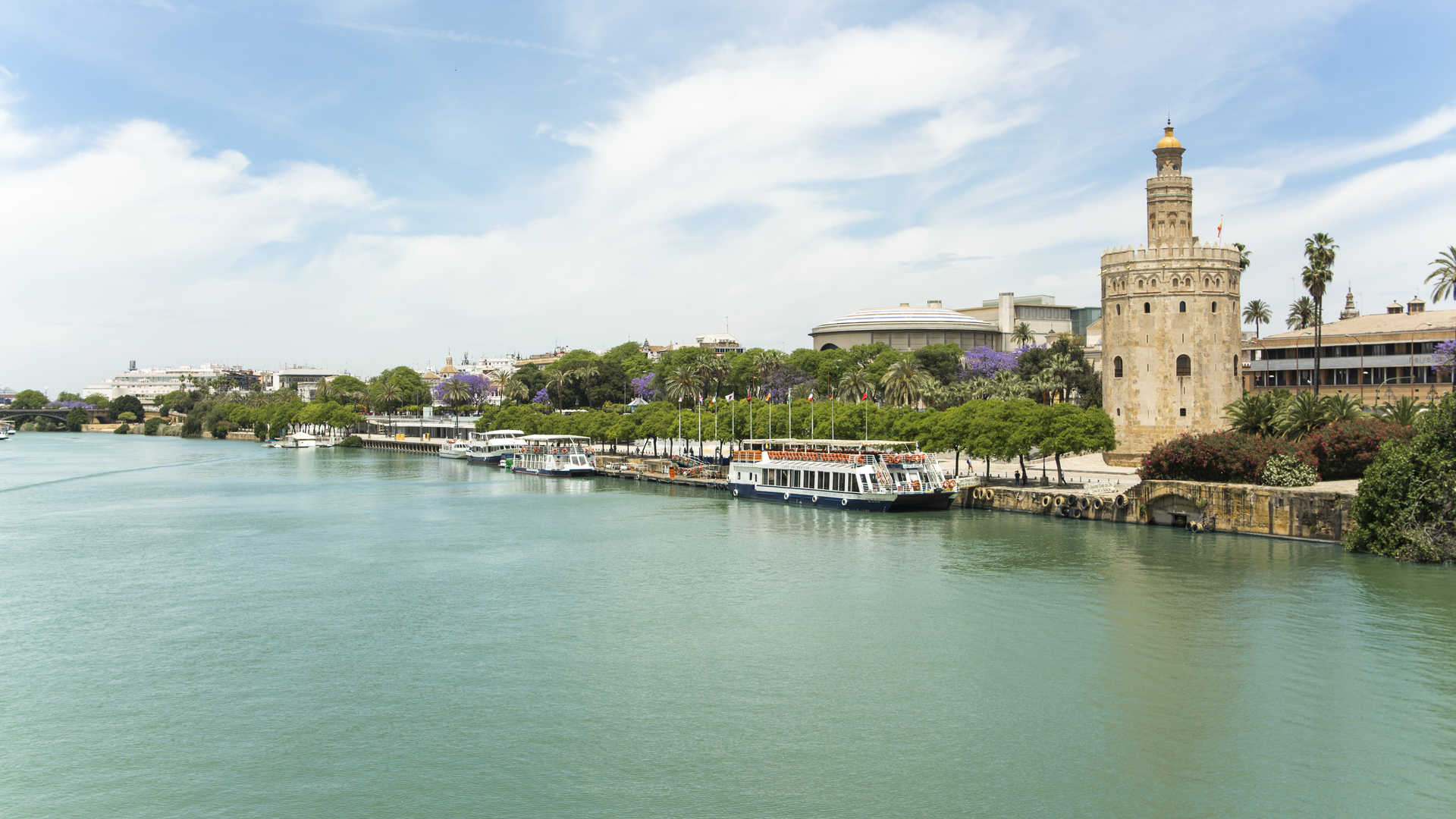
Take a stroll through Seville. Relax among its over 40,000 orange trees that adorn its streets, patios, squares and plazas. Discover all the curiosities of their planting in the city.
A brushstroke of Sevillian culture. Discover why there are orange trees in the city.
If you wander around Seville, you might start asking yourself why there are so many orange trees in the city. Historically, the Genovese sailors introduced oranges in Europe. And it wasn't just any type of orange tree. The variety found in the Andalusian capital is the bitter orange. There was a widespread belief that planting a tree of this originally Asian species would bring happiness to its owner. This was one of the major reasons why the Moors decided to expand the planting of orange trees throughout the peninsula.
In reality, the relationship between Seville and orange trees goes even further back in time. It was Hercules, the city's mythological founder, who crossed Africa for the second time to obtain the golden apple of immortality, associated with the orange. Once he had the orange in his hands, Hercules rested in Seville just before fighting against Cerbero, the dog with three heads.
To date, the bitter orange trees and the scent of orange blossom have become a Sevillian emblem. The city has over 40,000 samples, a figure that continues to increase while consolidating this trademark. So personal, that Seville has become the world's city with the most orange trees.
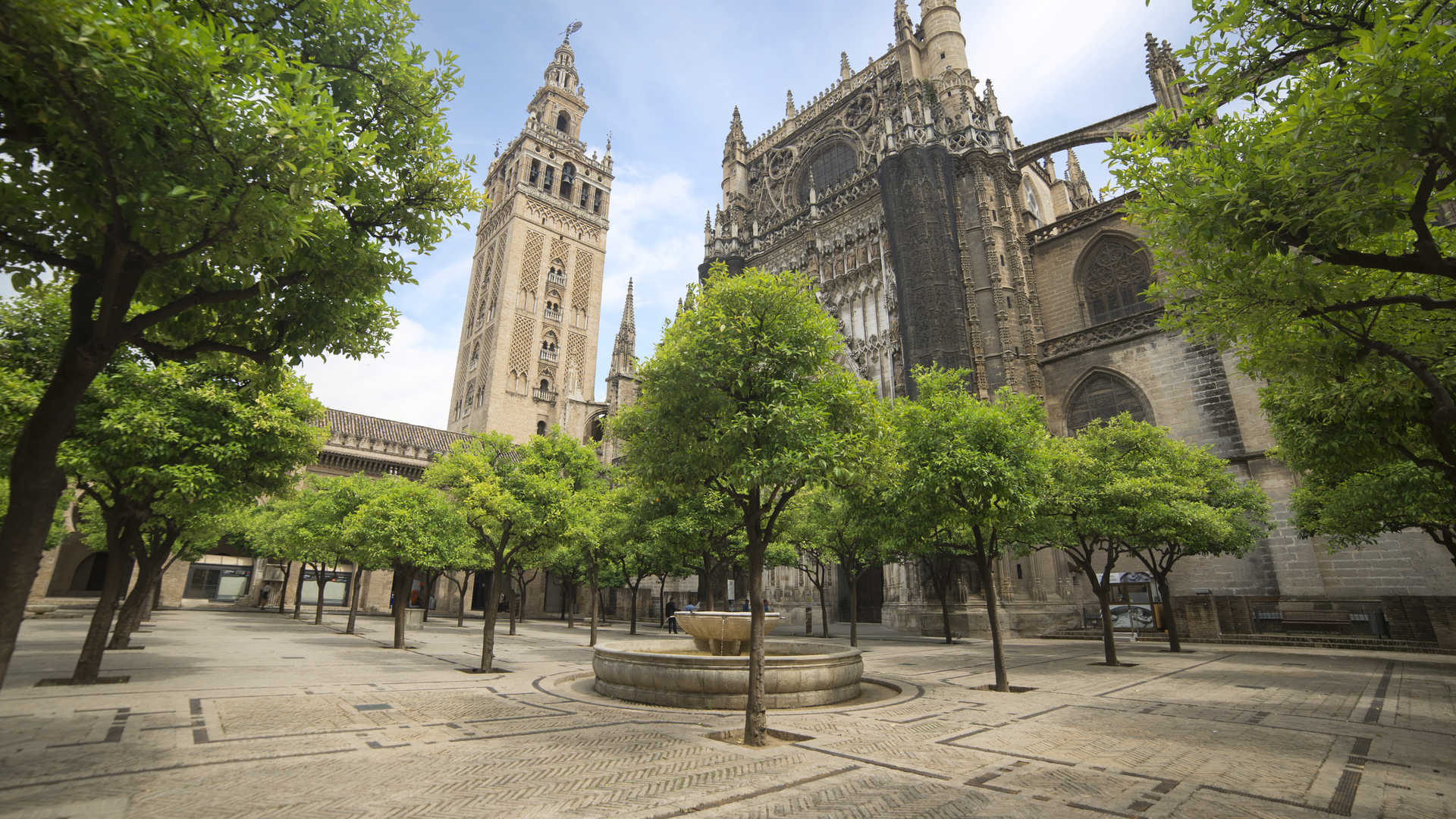
Streets, patios, squares and plazas. The corners of Seville with the most oranges.
Around the 12th century, and due to the belief that possessing one or more orange trees would guarantee happiness, the tree became popular throughout Seville. This fact has resulted in the city having a great number of authentic corners for strolling and relaxing. In the centre, don't forget to stroll through its most charming plazas: Plaza del Triunfo, Plaza de Doña Elvira, Plaza de la Alianza, Plaza de Santa Cruz and Plaza de las Banderas.
In the Cathedral you can marvel at the Patio of Orange Trees, a construction dating from the late 12th century, when the site was still a mosque. A last essential place in the centre: the area of bars along Mateos Gago, one very busy and lively area, with views of the Giralda and countless places where to eat and have a drink.
If you fancy walking along its streets, the old Triana neighbourhood, running along the Guadalquivir River, is also a good alternative for contemplating the image of orange trees in the city. To get away from the urban atmosphere, the Alcázar Gardens or the María Luisa Park are ideal for a break. Furthermore, this latter destination hosts Plaza España, one of Seville's the most spectacular constructions.
No doubt, the orange trees do the city wonders. Though to better witness these sceneries, you should visit in spring, time when the trees are in bloom. This is when the trees change into shades of white and Seville gives off the scent of orange blossom, the subtle aroma that comes from the flower.
Gastronomy and perfumes. Dare to try the bitter orange!
The Sevillian orange trees not only serve as emblematic elements and for decorative purposes. Up to the end of the Middle Ages, the fruit was used mainly in medicine and orange blossom flowers were used to make essential oils and perfumes. Even today, the orange blossom is still one of the most popular aromatic components of the perfume industry.
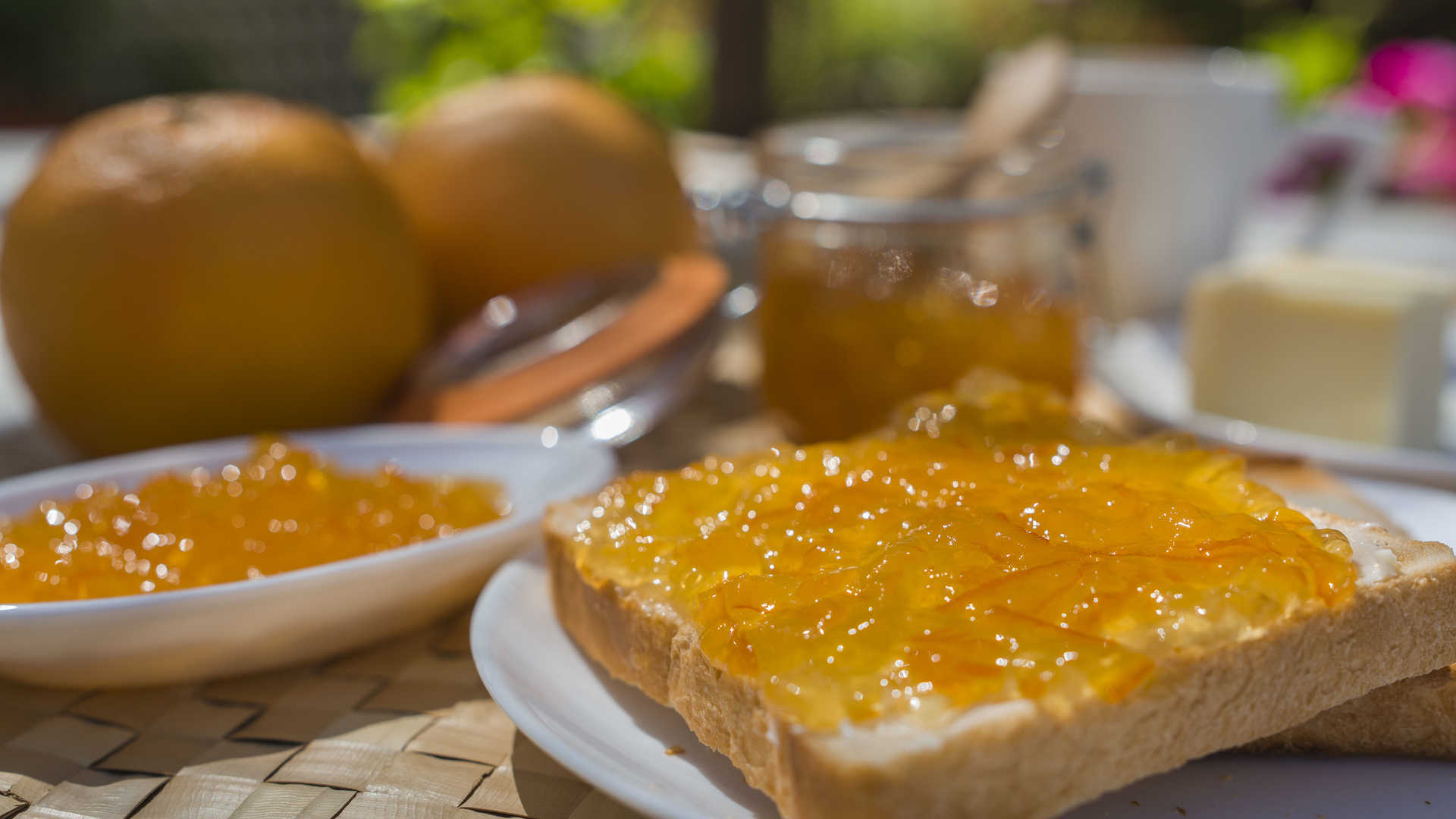
Would you like to taste the bitter orange? Although it is too bitter for eating fresh, the fruit is used to make liquor, creams, cakes and chocolates. However, the oranges of Seville are particularly associated with a food product: British jam.
This neighbouring country likes this bitter orange jam so much that it's the only one that conserves the name marmalade. The remaining are called jam. More specifically, it is known as Seville Orange Marmalade, and, as its name indicates, is made exclusively from Sevillian oranges.

